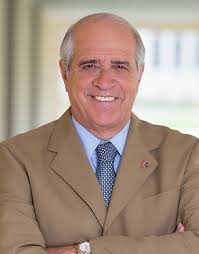 In Miami, globalization is not just talk or theory; it is actually unfolding before our very eyes. We see its effects every single day, and this is the reason why most of our business school graduates are choosing to stay in this market, and are even willing to take a cut on their salary to do so.
In Miami, globalization is not just talk or theory; it is actually unfolding before our very eyes. We see its effects every single day, and this is the reason why most of our business school graduates are choosing to stay in this market, and are even willing to take a cut on their salary to do so.
Because globalization is within the reach of our fingertips, new opportunities are emerging every single day. In the past, Miami was viewed principally as a tourist destination. As it has evolved into a center of commerce and the economic capital of Latin America, we are seeing growth in new industries. For instance, there is a tech boom underway today. Moreover, as cross-border activities generating from Miami continue to grow, there is a corresponding demand for legal, accounting and advisory services, with special emphasis on international business. For anyone interested in doing business with Latin America, Miami is the number one place to be.
For these reasons, and the sheer fact that it is an attractive city with many cultural and lifestyle offerings, Miami is an ideal location to study business. There are four AACSB (Association to Advance Collegiate Schools of Business) accredited institutions in Miami-Dade County, one of them being Barry University’s Andreas School of Business.
What sets the Andreas School of Business apart are the values we impart on our students. As a Catholic university founded by the Adrian Dominican Sisters, we emphasize principles of social responsibility and corporate sustainability. Not only is this what we believe to be the ethical approach in business, but it is becoming increasingly necessary for business leaders to understand these principles to e ectively engage with their consumers and stakeholders.
Looking ahead, we see the business community in Miami-Dade growing, thriving and becoming increasingly more competitive. To get ahead, it is necessary to have mastery over technology and principles of entrepreneurship—these are areas the Andreas School of Business focuses on in our curriculum.
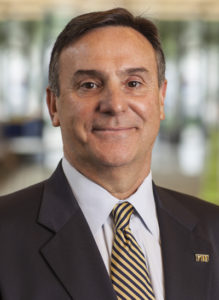 As an international community, South Florida reflects what the U.S. will be like in 30 years. Seeing as major global events impact not only large businesses but medium and small ones as well, we make sure that as our students are developing their own business skills, they are doing so with an eye to the international.
As an international community, South Florida reflects what the U.S. will be like in 30 years. Seeing as major global events impact not only large businesses but medium and small ones as well, we make sure that as our students are developing their own business skills, they are doing so with an eye to the international.
Our Small Business Development Center, for instance, has a trade specialty program that teaches students that competition comes in from unexpected areas wherever they go. We have a capital markets lab that examines international investment flows, and this year we launched a global sales lab, with competitions conducted in English and Spanish. Additionally, we have dual-degree opportunities and partnerships with over 40 universities around the world to help us facilitate cross-cultural exchanges.
We are constantly assessing the skills we need to develop for this community. Some of those are in the areas of data analytics, logistics, marketing, finance and international business. Our programs address topics that spread across several industries, including mortgage lending, flower importing, consulting, international human resources and Latin American health care—all of which are relevant industries for the South Florida market. Given this curriculum, it’s a win-win when our students get internships with companies in the area. The companies get manpower with specialized training, while our students gain experience in their field.
For its 2016 edition, U.S. News & World Report ranked our undergraduate program sixth for international business, while our graduate school was ranked 15th for its International MBA program. We are proud of this recognition, but among FIU’s most important roles is to be a pillar that trains the talent in the community to drive South Florida’s economic development and growth. FIU’s community programs, and its partnerships with local businesses and alumni, are accomplishing this. More than 30,000 of the 50,000 alumni FIU’s College of Business has graduated have stayed in the community, while thousands are based in 40 major cities around the U.S. and the world, creating a network that leads back to South Florida.
Miami’s cultural diversity, international ties and location in one of the world’s fastest-growing connectors make it an ideal place to 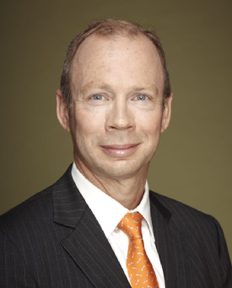 prepare for a future where all business will be global. Although our actual curriculum does not differ much from that of other U.S. business schools, there tends to be more international content in our classrooms. For instance, students learn from the international experiences of their classmates, 25 percent of whom are fully international, while another 15 percent have dual nationalities. We have about 90 regular, tenure-track professors who come from over 35 different countries. Additionally, we have an entire degree program in Spanish, and we have almost enough staff to do one entirely in Portuguese.
prepare for a future where all business will be global. Although our actual curriculum does not differ much from that of other U.S. business schools, there tends to be more international content in our classrooms. For instance, students learn from the international experiences of their classmates, 25 percent of whom are fully international, while another 15 percent have dual nationalities. We have about 90 regular, tenure-track professors who come from over 35 different countries. Additionally, we have an entire degree program in Spanish, and we have almost enough staff to do one entirely in Portuguese.
As a business school, we build strong recruiting relationships with companies in South Florida. One aspect of this is that we are hosting more alumni and corporate connections events. We want as many people as possible to become engaged with the school at different levels so we can have a better understanding of the needs of the business community.
Looking ahead, our objective is to become the most global U.S. business school and we are well positioned to do that. We launched eight new programs this year, including four specialty master’s programs in business analytics, finance, international business and economics, and two executive MBA programs. Our flagship executive MBA program is the Miami Executive MBA for the Americas, while the other is the Miami Executive MBA for Artists and Athletes.
We are still at a stage where, when local companies are thinking about developing their executives, they are not sending them to schools here in Miami. This is a problem of perception. We would like companies to understand that we know this market and how it operates better than schools they are sending their people to up north. I am not sure the market here fully recognizes how high quality the local educational institutions have become, because it has really happened in a very short time. One of our challenges is getting the word out.
Coral Gables Chamber of Commerce 2016 annual conference
When: Aug 26, 2016
Where: Biltmore Hotel in Coral Gables
Capital Analytics assisted in moderating the Coral Gables Chamber of Commerce 2016 annual conference. The panel was part of the annual Coral Gables Chamber of Commerce conference. It featured representatives of sharing economy heavy hitters: Uber, Airbnb and Pipeline shared-working spaces.
How universities in South Florida are playing a critical role in catalyzing Miami-Dade’s vibrant economy
Dr. Mark Rosenberg President – Florida International University
What impact does Florida International University (FIU) have on the Miami-Dade community?
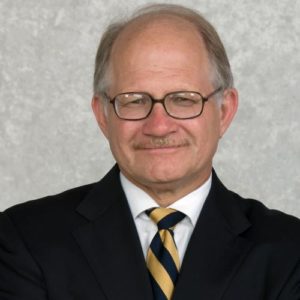 FIU hires the best and brightest faculty, who excel in advanced research. We are identifying key challenges in the community. Our community sees us as a solutions center and we like that. We want our community to know that we are agents of good and change. For example, we started a teacher preparation program that identifies ninth graders who want to be teachers and monitors their performance throughout high school. Meanwhile, we created FIU EMBRACE, a program to provide medical and behavioral health care for adults on the autism spectrum or who have other neurodevelopmental disorders. To address the needs of students aging out of foster care, we launched an initiative that provides opportunities to succeed academically and graduate from college. We are building partnerships around important issues like closing the education achievement gap, solving health disparities, dealing with transportation gridlock or undertaking the challenge of sea-level rise.
FIU hires the best and brightest faculty, who excel in advanced research. We are identifying key challenges in the community. Our community sees us as a solutions center and we like that. We want our community to know that we are agents of good and change. For example, we started a teacher preparation program that identifies ninth graders who want to be teachers and monitors their performance throughout high school. Meanwhile, we created FIU EMBRACE, a program to provide medical and behavioral health care for adults on the autism spectrum or who have other neurodevelopmental disorders. To address the needs of students aging out of foster care, we launched an initiative that provides opportunities to succeed academically and graduate from college. We are building partnerships around important issues like closing the education achievement gap, solving health disparities, dealing with transportation gridlock or undertaking the challenge of sea-level rise.
How does FIU cater to its diverse student population while meeting the needs of Miami’s highly international market?
Diversity is a core part of our strength that we cannot take for granted. To make our curriculum relevant to a globalized society, recently Steven J. Green, his wife Dorothea Green, daughter Kimberly Green and the Green Family Foundation gave $20 million to make the Steven J. Green School of International and Public Affairs one of the world’s top academic centers dedicated to international understanding, economic development, peace and security. With policy, history, languages and social science courses, the school plans on enrolling over 9,000 students. We already have funding from the European community and plan to work in Latin America, Asia and Africa. Thanks to technology’s global reach, we are learning to be more efficient at delivering education online.
How has FIU adapted to technology’s disruptive impact on higher education?
Technology has been a major driver in breaking down the monopoly universities had on education. Before, we monopolized what product was offered, when it was offered and where it was offered. Technology has disrupted those three elements, so we have to be better at being 24/7 providers of quality education. We also have to be consumer-centric. That doesn’t mean students will be spoon-fed, or that there won’t be rigorous standards. Our challenge is to figure out how to effectively deliver our product as a consequence of the reach technology now gives us.
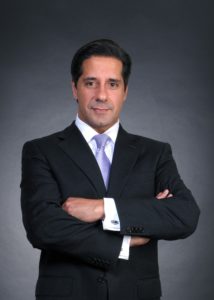 In 2015, Miami-Dade County Public Schools (M-DCPS) implemented rigorous academic standards that mirror Miami-Dade’s economic and industrial needs. Without compromising on standards, we decommissioned dozens of examinations, focusing on fewer but more effective assessments. Due to these changes, our graduation rate increased and the district now has the highest percentage of students passing college-level classes in the country. As important as our performance is our efficiency: M-DCPS boasts the highest return on investment of any public school district in the U.S., according to a study conducted by WalletHub in 2015.
In 2015, Miami-Dade County Public Schools (M-DCPS) implemented rigorous academic standards that mirror Miami-Dade’s economic and industrial needs. Without compromising on standards, we decommissioned dozens of examinations, focusing on fewer but more effective assessments. Due to these changes, our graduation rate increased and the district now has the highest percentage of students passing college-level classes in the country. As important as our performance is our efficiency: M-DCPS boasts the highest return on investment of any public school district in the U.S., according to a study conducted by WalletHub in 2015.
We expanded the portfolio of digital content for teachers and students and achieved full high-speed WiFi connectivity in over 400 schools. We also deployed over 104,000 portable devices into the hands of students and installed 11,000 interactive classroom boards with internet access and surround sound. Additionally, we increased the number of choice programs and now lead the nation with over 64 percent of our students enrolled in non-traditional education. As we complete the implementation of a $1.2-billion county bond in the next three years, we will have fully renovated educational environments.
M-DCPS has a present and future impact on the economy, as it is the state’s second largest employer. Florida’s future relies on how Miami-Dade’s trade, commerce, tourism and other sectors perform, and it falls on M-DCPS to teach our students—representing 13 percent of the state’s K-12 population—the critical skills needed for these industries.
Rather than rejecting the cultural and socioeconomic diversity of our market as a challenge, we embrace it as an opportunity. Being smart about this means ensuring that linguistic diversity is a must, whether it is in Spanish, Portuguese, German or Mandarin. This way, we equip our students to participate in the global marketplace. But we also ensure that our students receive a complete education—that we instill civic and moral values and infuse a sense of engagement and responsibility needed to navigate a democratic society.
How health institutions in South Florida are adapting to industry change and creating new ways of delivering care
Steven Altschuler CEO – UHealth
What distinguishing trends mark the South Florida health care market?
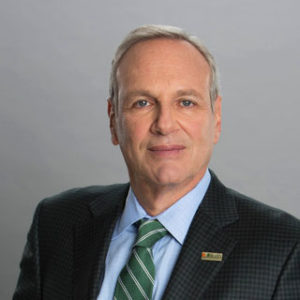 Broadly speaking, we should all expect significant transformation in the health care market. We will continue to see consolidation in all segments of the market, from national insurers to local providers. Finally, the federal and state governments will exert significant influence over the patient care model through Medicare, Medicaid and the exchanges.
Broadly speaking, we should all expect significant transformation in the health care market. We will continue to see consolidation in all segments of the market, from national insurers to local providers. Finally, the federal and state governments will exert significant influence over the patient care model through Medicare, Medicaid and the exchanges.
In South Florida, the population is distinctly older than other parts of the country, resulting in the highest Medicare cost structure in the U.S. At the same time, Florida is now the fastest-growing state in the country, which also makes it an attractive health care market. These two demographic factors will result in consolidation and disruption of the provider and insurance markets. New care models will be implemented that improve access, quality and outcomes and simultaneously reduce cost. The South Florida region will also become a hub for international medical tourism as the care model changes and the cost of care is reduced.
UHealth is both a care provider and an educational institution. How is medical education evolving to keep pace with new models of care?
The care model is evolving to become more patient-centered (ideal patient experience) with dramatic increases in outpatient care and significant decreases in inpatient bed capacity. Inpatient facilities will become highly regionalized and will be primarily devoted to intensive care services and complex medical and surgical care. Medical students are now being trained in this new care model and are being exposed to its hallmarks of new technologies and new sites of care. This exposure is driving the increased focus on simulation experiences and the construction of new educational centers where students can practice using advanced technology.
As an incoming CEO to UHealth, what are your top priorities?
UHealth is South Florida’s only academic health system with the tripartite mission of clinical care and population health management, translational patient-oriented research and medical education. The health system will evolve quickly to become an integrated, value-based, translational enterprise focusing on tertiary and quaternary care—the ideal patient experience and cutting-edge patient-oriented research that moves quickly from the “bench” to the “bedside.” UHealth’s ultimate goal is to improve the health status of the South Florida community.
How incumbent systems in South Florida are making big changes to adapt to a rapidly evolving tech-driven health sector
George Foyo Executive Vice President & Chief Administrative Officer – Baptist Health South Florida
How have demographic shifts in South Florida changed the way Baptist Health administers its services?
Both the millennial and baby boomer populations are growing significantly, and Baptist Health is adjusting its methods to best serve their need s. For example, millennials want to use electronic devices to talk to doctors and use the internet to research symptoms, while baby boomers rely on face-to-face visits. Our rule is “know your customer,” so we strive to deliver services our customers appreciate. Consumer choices drive business success. To better serve our population, we are investing in tools that enhance our digital interactions with patients, and have established social media presences on Facebook, Twitter and Instagram.
s. For example, millennials want to use electronic devices to talk to doctors and use the internet to research symptoms, while baby boomers rely on face-to-face visits. Our rule is “know your customer,” so we strive to deliver services our customers appreciate. Consumer choices drive business success. To better serve our population, we are investing in tools that enhance our digital interactions with patients, and have established social media presences on Facebook, Twitter and Instagram.
Where do you see technology making the most prominent marks on the health landscape, and how is Baptist Health responding?
Like other industries, the health care industry is transitioning, partly because regulations and technology are impacting health care systems. Medical technologies, such as telemedicine, including mobility, as well as advanced medical equipment and procedures, are driving the industry’s evolution, creating efficient health care delivery mechanisms that are reducing the number of overnight patients. For example, patients can use smartphones to interact with doctors. Non-invasive treatments like robotic surgery are minimizing hospitalization. As a result, the outpatient business is growing at a higher rate than the inpatient business. Though regulationsare controlling how much technology can be utilized for patient care, telemedicine is becoming prominent and changing the way the industry delivers services. To adjust, Baptist Health is reinforcing its outpatient, urgent care and diagnostic centers for patients expecting quick turnarounds.
What are the key regulatory issues affecting health care in South Florida?
The Affordable Care Act created a new revenue model, and we are reducing our cost structure to adjust. State legislators are prioritizing health care cost management and scrutinizing insurance companies, hospital systems and current regulations to lift regulatory constraints and create competition. Part of this means lifting restrictions on where new hospitals can be opened and allowing overnight stays at ambulatory surgery centers. In addition, the federal government has created the Federal Healthcare Exchange to make insurance accessible to uninsured, lower-income individuals. This has meant that a significant number of uninsured or underinsured patients now have access, but typically with high deductibles. We as a health system are adapting to the changing health care landscape.
Capital Analytics speaks to Jorge Gonzalez, president & CEO, City National Bank
July 2017 — The last 12 months has been a story of increasing success for South Florida as the area has seen the growth of sectors outside of traditional areas of strength such as tourism and trade. Technology and healthcare are two areas among others that signal just how exciting Miami is becoming as an investment destination.
- Underpinning this growth is a robust banking center, which is one of the healthiest in the U.S., buoyed by a strong economy featuring a robust real estate sector and favorable regulations from the State of Florida. Miami-Dade follows the area’s positive trend in the banking sector and its top five banks all experienced an increase in assets in 2016. Among them is City National Bank of Florida, which recorded a $24.3 million net income in the first quarter of 2017, an 83 percent increase year-on-year. Capital Analytics spoke with President & CEO Jorge Gonzalez about growth in the region, changing demographics and the road ahead for South Florida.
In which area of business do you expect to see the most growth for South Florida?
Small business will continue to be the main economic driver in South Florida, and this is an underserved segment when it comes 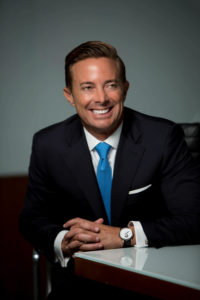 to banking. Our value proposition is particularly attractive to small and midsized businesses that really want a partner, not just a bank. There are various growing sectors in South Florida, including distribution, technology, healthcare and professional services. We see great opportunity there. Small businesses will continue to grow and expand as the economy continues to strengthen and we’ll see job growth and innovation across various of these sectors.
to banking. Our value proposition is particularly attractive to small and midsized businesses that really want a partner, not just a bank. There are various growing sectors in South Florida, including distribution, technology, healthcare and professional services. We see great opportunity there. Small businesses will continue to grow and expand as the economy continues to strengthen and we’ll see job growth and innovation across various of these sectors.
What are the expectations of market performance for 2017?
All signs so far in 2017 indicate that we are continuing to see a strengthening economy and low unemployment, and that is good for everyone. South Florida and Miami in particular continue to be the beneficiaries of international investment and while that has waned some with the strengthening dollar, we are still a highly desired destination for capital and investment.
What regulatory frameworks do you want to see addressed?
I wholeheartedly believe that banks need to be closely regulated, but that regulation should focus on the areas where there is risk and exposure. There has to be a prioritization of of regulation to focus on areas with the most risk. Technology is one area that I think we’ll see more regulation and that makes sense, because of the risks associated with electronic fraud. Information security and cyber security are emerging areas that banks and regulators need to be focused on. It is a new and quickly growing threat that needs to be managed very carefully.
South Florida has a young population. How will this affect long-term products and services?
Ultimately what we are building here is a global community bank, that is, a community bank that is focused on serving the marketplace it operates in, with a global perspective. We have a $40-billion Chilean parent company, Bci, and City National Bank is based in South Florida, which is home to people and companies from throughout the world. We are building a unique platform to serve them. Regardless of age, consumers are looking for the same things: relationships, excellent service and a diverse product offering. We are what I call and old-fashioned bank, with a modern twist, committed to those traditional values of building relationships and delivering an exceptional client experience and at the same time investing in technology so that our clients can interact with us in the way that they choose. We are also willing to build tailor made solutions for our clients. These are things that most banks are not built to do. Either they are too big to be personal or too small to invest in the systems and solutions clients need. The expectations of all clients are very high and we are constantly raising the bar for ourselves and working to anticipate client needs and wants.
What challenges need to be overcome?
I am very bullish on South Florida. We’ve seen tremendous growth in the last 10-15 years and I expect the next decade will dwarf that. Miami is a brand that has tremendous national and international appeal, and it has emerged as one of the most important places for business in the world. But that growth comes with challenges and I think we all know what they are. Our infrastructure needs to be properly developed to support long-term growth. This is best illustrated by the traffic situation. Affordable housing is another area that we need to find innovative ways to increase the inventory. Companies want to ensure their employees have a certain quality of life and that includes being able to live closer to work. Education is also an area that we need to continue focusing on. Our public schools have made great strides, but more work is needed, particularly in the area of ensuring we provide opportunities for individuals to be productive members of our community. This is an area that City National Bank invests in with our community dollars, because we believe that educational opportunity and access has the biggest impact on the long-term economic development of our community. Our community has also seen a lot of investment in culture, from new museums to international art fairs, and this is something we need to foster more of, if we are going to continue to develop Miami into a cosmopolitan and global city.
To learn more about City National Bank of Florida, visit their website at: https://www.citynational.com/
 In Miami, globalization is not just talk or theory; it is actually unfolding before our very eyes. We see its effects every single day, and this is the reason why most of our business school graduates are choosing to stay in this market, and are even willing to take a cut on their salary to do so.
In Miami, globalization is not just talk or theory; it is actually unfolding before our very eyes. We see its effects every single day, and this is the reason why most of our business school graduates are choosing to stay in this market, and are even willing to take a cut on their salary to do so.
 As an international community, South Florida reflects what the U.S. will be like in 30 years. Seeing as major global events impact not only large businesses but medium and small ones as well, we make sure that as our students are developing their own business skills, they are doing so with an eye to the international.
As an international community, South Florida reflects what the U.S. will be like in 30 years. Seeing as major global events impact not only large businesses but medium and small ones as well, we make sure that as our students are developing their own business skills, they are doing so with an eye to the international. prepare for a future where all business will be global. Although our actual curriculum does not differ much from that of other U.S. business schools, there tends to be more international content in our classrooms. For instance, students learn from the international experiences of their classmates, 25 percent of whom are fully international, while another 15 percent have dual nationalities. We have about 90 regular, tenure-track professors who come from over 35 different countries. Additionally, we have an entire degree program in Spanish, and we have almost enough staff to do one entirely in Portuguese.
prepare for a future where all business will be global. Although our actual curriculum does not differ much from that of other U.S. business schools, there tends to be more international content in our classrooms. For instance, students learn from the international experiences of their classmates, 25 percent of whom are fully international, while another 15 percent have dual nationalities. We have about 90 regular, tenure-track professors who come from over 35 different countries. Additionally, we have an entire degree program in Spanish, and we have almost enough staff to do one entirely in Portuguese.
 FIU hires the best and brightest faculty, who excel in advanced research. We are identifying key challenges in the community. Our community sees us as a solutions center and we like that. We want our community to know that we are agents of good and change. For example, we started a teacher preparation program that identifies ninth graders who want to be teachers and monitors their performance throughout high school. Meanwhile, we created FIU EMBRACE, a program to provide medical and behavioral health care for adults on the autism spectrum or who have other neurodevelopmental disorders. To address the needs of students aging out of foster care, we launched an initiative that provides opportunities to succeed academically and graduate from college. We are building partnerships around important issues like closing the education achievement gap, solving health disparities, dealing with transportation gridlock or undertaking the challenge of sea-level rise.
FIU hires the best and brightest faculty, who excel in advanced research. We are identifying key challenges in the community. Our community sees us as a solutions center and we like that. We want our community to know that we are agents of good and change. For example, we started a teacher preparation program that identifies ninth graders who want to be teachers and monitors their performance throughout high school. Meanwhile, we created FIU EMBRACE, a program to provide medical and behavioral health care for adults on the autism spectrum or who have other neurodevelopmental disorders. To address the needs of students aging out of foster care, we launched an initiative that provides opportunities to succeed academically and graduate from college. We are building partnerships around important issues like closing the education achievement gap, solving health disparities, dealing with transportation gridlock or undertaking the challenge of sea-level rise. In 2015, Miami-Dade County Public Schools (M-DCPS) implemented rigorous academic standards that mirror Miami-Dade’s economic and industrial needs. Without compromising on standards, we decommissioned dozens of examinations, focusing on fewer but more effective assessments. Due to these changes, our graduation rate increased and the district now has the highest percentage of students passing college-level classes in the country. As important as our performance is our efficiency: M-DCPS boasts the highest return on investment of any public school district in the U.S., according to a study conducted by WalletHub in 2015.
In 2015, Miami-Dade County Public Schools (M-DCPS) implemented rigorous academic standards that mirror Miami-Dade’s economic and industrial needs. Without compromising on standards, we decommissioned dozens of examinations, focusing on fewer but more effective assessments. Due to these changes, our graduation rate increased and the district now has the highest percentage of students passing college-level classes in the country. As important as our performance is our efficiency: M-DCPS boasts the highest return on investment of any public school district in the U.S., according to a study conducted by WalletHub in 2015. Broadly speaking, we should all expect significant transformation in the health care market. We will continue to see consolidation in all segments of the market, from national insurers to local providers. Finally, the federal and state governments will exert significant influence over the patient care model through Medicare, Medicaid and the exchanges.
Broadly speaking, we should all expect significant transformation in the health care market. We will continue to see consolidation in all segments of the market, from national insurers to local providers. Finally, the federal and state governments will exert significant influence over the patient care model through Medicare, Medicaid and the exchanges. s. For example, millennials want to use electronic devices to talk to doctors and use the internet to research symptoms, while baby boomers rely on face-to-face visits. Our rule is “know your customer,” so we strive to deliver services our customers appreciate. Consumer choices drive business success. To better serve our population, we are investing in tools that enhance our digital interactions with patients, and have established social media presences on Facebook, Twitter and Instagram.
s. For example, millennials want to use electronic devices to talk to doctors and use the internet to research symptoms, while baby boomers rely on face-to-face visits. Our rule is “know your customer,” so we strive to deliver services our customers appreciate. Consumer choices drive business success. To better serve our population, we are investing in tools that enhance our digital interactions with patients, and have established social media presences on Facebook, Twitter and Instagram. to banking. Our value proposition is particularly attractive to small and midsized businesses that really want a partner, not just a bank. There are various growing sectors in South Florida, including distribution, technology, healthcare and professional services. We see great opportunity there. Small businesses will continue to grow and expand as the economy continues to strengthen and we’ll see job growth and innovation across various of these sectors.
to banking. Our value proposition is particularly attractive to small and midsized businesses that really want a partner, not just a bank. There are various growing sectors in South Florida, including distribution, technology, healthcare and professional services. We see great opportunity there. Small businesses will continue to grow and expand as the economy continues to strengthen and we’ll see job growth and innovation across various of these sectors.